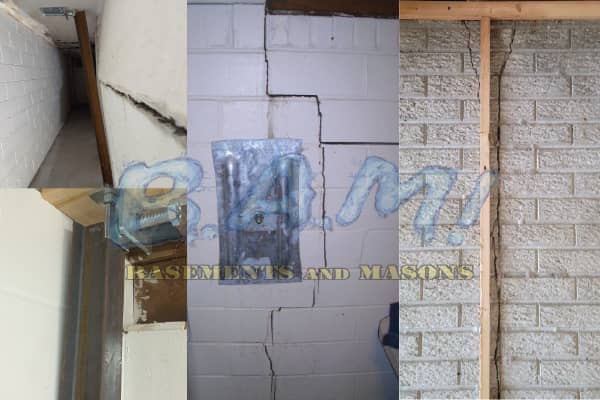The Best Strategy To Use For Best Basement Waterproofing
The Best Strategy To Use For Best Basement Waterproofing
Blog Article
Best Basement Waterproofing - Truths
Table of ContentsSome Known Questions About Best Basement Waterproofing.Some Known Details About Best Basement Waterproofing Some Known Questions About Best Basement Waterproofing.Get This Report about Best Basement WaterproofingRumored Buzz on Best Basement Waterproofing
AdvantaClean's trained professionals and specialists will certainly situate the water resource. If wall surface or piece splits are existing, we will infuse polyurethane and epoxies into the fractures and seal the concession, preventing more moisture from getting in.Mounting basement ventilation systems, conditioning systems, or basement dehumidifier systems to obtain water out of your cellar. Selecting AdvantaClean's cellar waterproofing services is an effective method to deal with moisture and stop mold and mildew from jeopardizing the structure of your home and the health of your family.
If there's condensation on the exterior of the foil, you have high humidity in your cellar. Repair it with a portable space dehumidifier or a whole-house humidifier system as opposed to waterproofing products. If the aluminum foil has condensation on the inside surface area (beside the wall surface), the soil around your house might be naturally damp from a high water table or inadequate dirt water drainage.
You can waterproof simply your interior walls, which may solve the trouble. Once they dry out, they adhere permanently to concrete and masonry wall surfaces.
Best Basement Waterproofing Fundamentals Explained
Swirl the brush at the last stage of application to give the wall surface an attractive, ended up appearance. Concrete water resistant layers can't be related to formerly painted surfaces; check the label. A 5-gallon pail prices regarding $60. Also referred to as densifiers, they appropriate only for walls that haven't been painted or secured.
Yet you comb, roll, or spray it on a lot more thickly one gallon covers simply 75 square feet, not the 300 square feet normal with standard paint. Water-proof paint is fine for do it yourself application. You can use it over repainted surfaces, and paint over it once it's cured (one gallon costs $37).
It can cost $10,000 to $15,000, depending on the job needed (Best Basement Waterproofing). Outside waterproofing involves excavating all around the residence to the full deepness of the foundation walls, after that installing a water resistant layer or membrane layer topped by drain panels.
Rumored Buzz on Best Basement Waterproofing
A cellar without waterproofing is kind of like that. Your basement doesn't want to go via a downpour without proper security just as Discover More much as you don't want to.
Outside waterproofing is a waterproofing approach that involves sealing your home from the exterior. It's kind of like a moat around a castle. It entails excavating a trench around your entire residence down to the structure (concerning 8 to 10 feet down). The structure wall surfaces are then cleansed, secured, and covered with a water-proof membrane or sealant.

The Buzz on Best Basement Waterproofing
It's an extra involved procedure that requires excavating up your lawn, which is pricey and time-consuming. Exterior waterproofing involves getting rid of every little thing surrounding your home, including porches, driveways, sidewalks, landscape design, a/c units, decks, and so forth. If any one of the work was done improperly and water is still entering your cellar, there isn't much you can do to remedy or repair it.
Interior basement waterproofing involves waterproofing from the inside. Any type of water that leaks right into your basement is redirected before it touches your flooring. It's kind of like using a raincoat under your garments. It includes 2 things: a water drainage track and a sump pump. It works by sealing the inside of your cellar walls and floors so water that tries to enter is transported out with a sump pump.
It's an effective technique to the original source water-proof your cellar. The downside of indoor cellar waterproofing mostly involves the setup procedure. This technique calls for kept things, furnishings, and built-in shelving or closets to be relocated from touching the cellar wall surfaces. And during installment, your cellar can't be made use of. The most significant distinction in between both approaches is this: Outside waterproofing is a preventative option and interior waterproofing is a corrective remedy.
The 3-Minute Rule for Best Basement Waterproofing
Finally, outside and indoor basement waterproofing are both reliable techniques of shielding your home from water damages. Outside waterproofing creates an obstacle that protects against water from entering your home, while indoor waterproofing redirects water that does enter your home. And it is necessary to note that outside waterproofing is a pricey and turbulent setup process when compared to indoor waterproofing.
Whichever approach you choose, ensure you select a reputable and credible service provider for the work. Both methods need seasoned employees to take care of the task. If you have any inquiries about cellar waterproofing, please connect to us. And if you're in our solution location and have water in your basement, contact us for a totally free, no-obligation home evaluation.
You can complete our kind here. Best Basement Waterproofing, start a chat in the bottom right-hand corner, or call us at 1-800-827-0702
Report this page